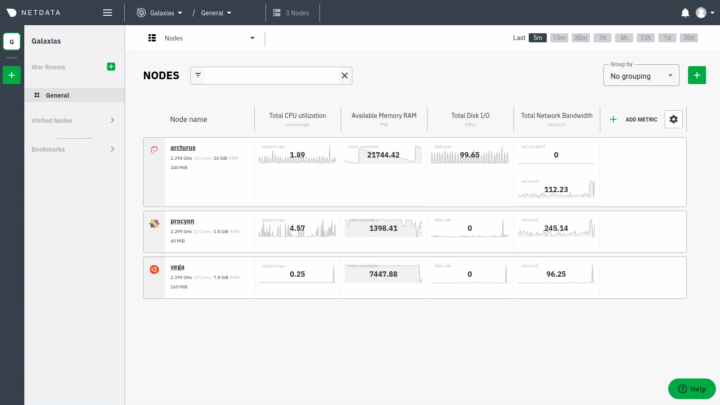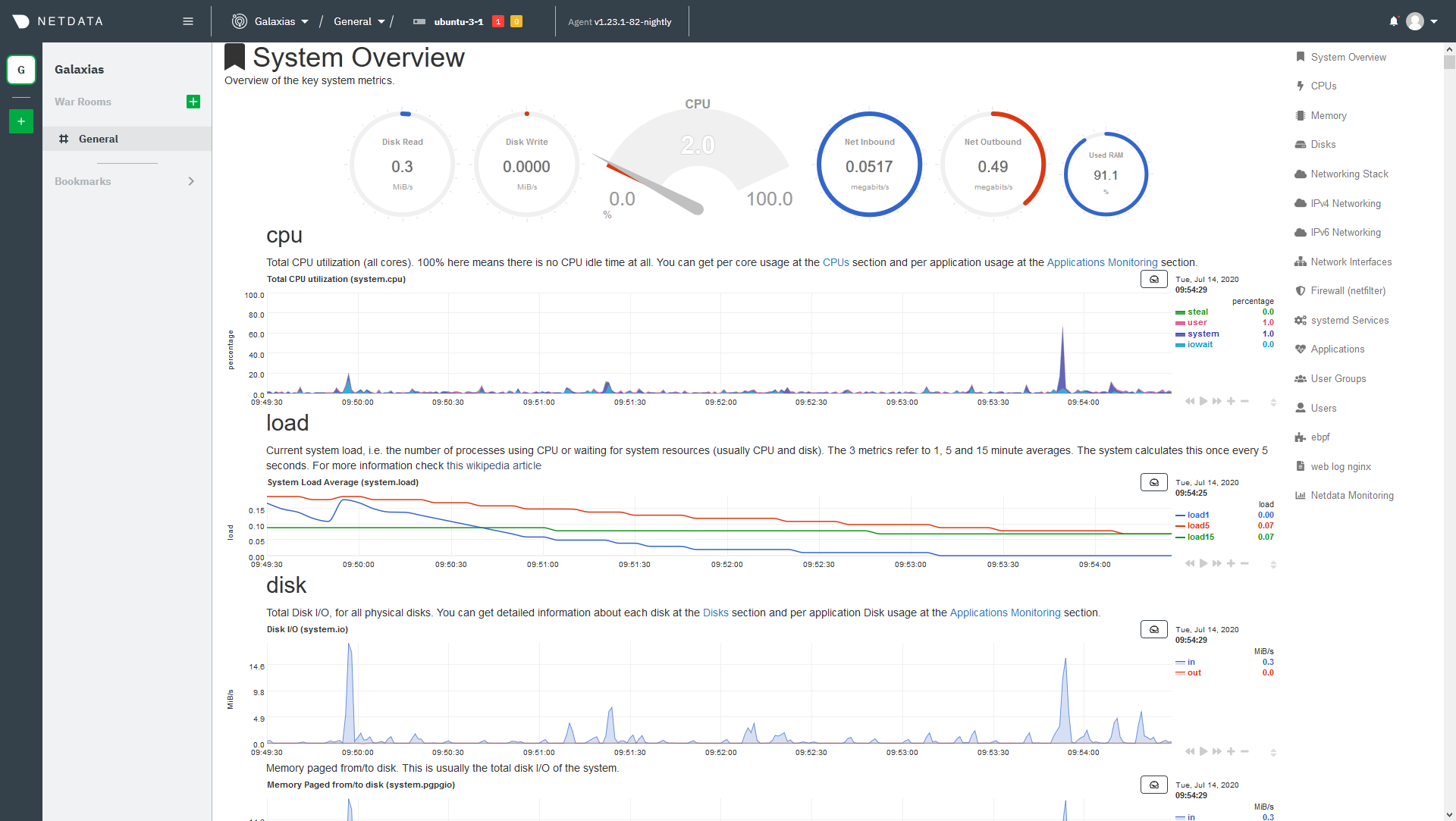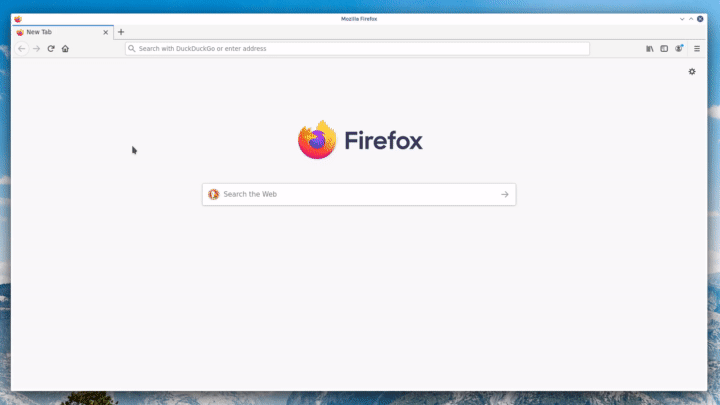diff options
| author | Joel Hans <joel@netdata.cloud> | 2020-09-29 10:57:52 -0700 |
|---|---|---|
| committer | GitHub <noreply@github.com> | 2020-09-29 10:57:52 -0700 |
| commit | 61d7e23eed0503bf591274df70713970213b5c7f (patch) | |
| tree | 125879ff5f780c2937ee206fc510d89e9a91a868 /docs/quickstart | |
| parent | e3b04fb39a06991d9a2deed0488044dd7d340e3f (diff) | |
Add docsv2 project to master branch (#10000)
* Add overview docs to docsv2 project
* Add quickstart docs to docsv2 project (#9865)
* Init quickstart docs
* Begin work on quickstart guides
* Finish quickstart drafts
* Tweaks to both quickstarts
* Add titles
* Copyedit pass to both docs
* Fixes for Amy and Jen
* Add Get doc to docsv2 project (#9854)
* Init get file
* Add some links
* Change h2 to h1
* Rephrase
* Add configure docs to docsv2 project (#9878)
* Add overview docs to docsv2 project (#9849)
* Init files
* Add drafts of what and why
* Finish initial drafts
* Fix edit URL
* Copyedit pass
* Finish initial drafts of configure docs
* Copyedit all docs
* Fixes for Amy
* Fixes for Jen
* Add collect docs to the docsv2 project (#9932)
* Init files
* Finish first two collect docs
* Finish drafts of collect docs
* Copyedit pass
* Fixes for Amy
* Fix for Jen
* Add visualize docs to the docsv2 project (#9943)
* Add visualize docs
* Copyedits and cleanup
* New images and features
* Copyedit pass and cleanup
* Missing word
* Fixes for Jen
* Add monitor docs to docsv2 project (#9949)
* Finish drafts of monitor docs
* Copyedit pass
* Remove whitespace
* Fixes for Jen
* Add store docs to docsv2 project (#9969)
* Finalize store documents
* Fix import path
* Finishing edit section
* Copyedit pass
* Add export docs to docsv2 project (#9986)
* Add install and claim videos to Get doc
* Finish drafts of exporting docs plus other tweaks
* Init new exporting READMEs
* Copyedit pass and new links
* Fixes for Amy, Vlad, Jen
* Fix links in docsv2 project (#9993)
* Fix links
* Fix a bunch of links ahead of export merge
* Fix additional links
* Fix links, nuke what-is-netdata
* Fixing a few last links
* Improve product images in overview
* Remove extra paren
* Quick tweaks for Jen
* Fixes for Jen
* Access fix
* Remove extra word
Diffstat (limited to 'docs/quickstart')
| -rw-r--r-- | docs/quickstart/infrastructure.md | 126 | ||||
| -rw-r--r-- | docs/quickstart/single-node.md | 96 |
2 files changed, 222 insertions, 0 deletions
diff --git a/docs/quickstart/infrastructure.md b/docs/quickstart/infrastructure.md new file mode 100644 index 0000000000..9ce3ad214c --- /dev/null +++ b/docs/quickstart/infrastructure.md @@ -0,0 +1,126 @@ +<!-- +title: "Infrastructure monitoring with Netdata" +sidebar_label: "Infrastructure monitoring" +description: "Build a robust, infinitely scalable infrastructure monitoring solution with Netdata. Any number of nodes and every available metric." +custom_edit_url: https://github.com/netdata/netdata/edit/master/docs/quickstart/infrastructure.md +--> + +# Infrastructure monitoring with Netdata + +Together, the Netdata Agent and Netdata Cloud create a powerful, infinitely-scalable infrastructure monitoring solution. + +The Netdata Agent uses zero-configuration collectors to gather metrics from every application and container instantly. +The distributed data model lets you monitor everything without a slow and troublesome centralized data lake for your +infrastructure's metrics, reducing the resources you need to invest in metrics retention. Netdata Cloud unifies all the +metrics from these distributed nodes on customizable, interactive, and real-time visualizations. + +In this quickstart guide, you'll learn how to see key metrics from all your nodes in one interface and build your first +dashboard for aggregating like metrics from many distributed nodes. You'll then take a peek into configuring individual +nodes and get helpful pointers about collecting all the metrics from every critical application in your infrastructure. + +> This quickstart assumes you've installed the Netdata Agent on more than one node in your infrastructure, and claimed +> that node to your Space in Netdata Cloud. If you haven't yet, see the [_Get Netdata_ doc](/docs/get/README.md) for +> details on installation and claiming. + +## See your infrastructure's metrics + +To see all your nodes from a single pane of glass, first [sign in](https://app.netdata.cloud) to Netdata Cloud. As you +sign in, Netdata Cloud pings each claimed node to start on-demand streaming from your nodes to your browser. When +Netdata Cloud loads your War Room's **Nodes** view, you'll immediately see key metrics from your nodes, streamed in +real time, in a single interface. + + + +You can drill down into any node's full dashboard by clicking on that node's hostname in the Nodes view. + + + +You can use single-node dashboards in Netdata Cloud to drill down on specific issues, scrub backward in time to +investigate historical data, and see like metrics presented meaningfully to help you troubleshoot performance problems. +Learn about [interacting with dashboards and charts](/docs/visualize/interact-dashboards-charts.md) to get the most from +all of Netdata's real-time metrics. + +> If you want to monitor a Kubernetes cluster with Netdata, see our [k8s installation +> doc](/packaging/installer/methods/kubernetes.md) for setup details, and then read our guide, [_Monitor a Kubernetes +> cluster with Netdata_](/docs/guides/monitor/kubernetes-k8s-netdata.md). + +## Build new dashboards for your infrastructure + +You can use Netdata Cloud to build new dashboards that match your infrastructure's topology or help you diagnose complex +issues by aggregating correlated charts from any number of nodes. + +To build your first dashboard, click on the **Nodes** dropdown, then select **+ Add**. Enter a name to assign to this +dashboard. Click on either of the **Add chart** buttons, then select the node you want to add a chart from. Select the +context, which is Netdata's way to organize charts, and then click **Add chart**. + +Once you add a few charts, you can move them around, resize them, and add text. Make sure you click the **Save** button +before you navigate away. + +Read more about [creating new dashboards](/docs/visualize/create-dashboards.md) for more details about the process and +additional tips on best leveraging the feature to help you troubleshoot complex performance problems. + +## Configure your nodes + +You can configure any node in your infrastructure if you need to, although most users will find the default settings +work extremely well for monitoring their infrastructures. + +Each node has a configuration file called `netdata.conf`, which is typically at `/etc/netdata/netdata.conf`. The best +way to edit this file is using the `edit-config` script, which ensures updates to the Netdata Agent do not overwrite +your changes. For example: + +```bash +cd /etc/netdata +sudo ./edit-config netdata.conf +``` + +Our [configuration basics doc](/docs/configure/nodes.md) contains more information about `netdata.conf`, `edit-config`, +along with simple examples to get you familiar with editing your node's configuration. + +After you've learned the basics, you should [secure your infrastructure's nodes](/docs/configure/secure-nodes.md) using +one of our recommended methods. These security best practices ensure no untrusted parties gain access to the metrics +collected on any of your nodes. + +## Collect metrics from your systems and applications + +Netdata has [300+ pre-installed collectors](/collectors/COLLECTORS.md) that gather thousands of metrics with zero +configuration. Collectors search each of your nodes in default locations and ports to find running applications and +gather as many metrics as they can without you having to configure them individually. + +In fact, Netdata is already collecting thousands of metrics per second from your webservers, databases, containers, and +much more, on each node in your infrastructure. + +These metrics enrich your Netdata Cloud experience. You can see metrics from systems, containers, and applications in +the individual node dashboards, and you can create new dashboards around very specific charts, such as the real-time +volume of 503 responses from each of your webserver nodes. + +Most collectors work without configuration, but you should read up on [how collectors +work](/docs/collect/how-collectors-work.md) and [how to enable/configure](/docs/collect/enable-configure.md) them. + +In addition, find detailed information about which [system](/docs/collect/system-metrics.md), +[container](/docs/collect/container-metrics.md), and [application](/docs/collect/application-metrics.md) metrics you can +collect from across your infrastructure with Netdata. + +## What's next? + +Netdata has many features that help you monitor the health of your nodes and troubleshoot complex performance problems. +Once you have a handle on configuration and are collecting all the right metrics, try out some of Netdata's other +infrastructure-focused features: + +- [Organize your nodes](/docs/configure/spaces-war-rooms.md) into **War Rooms** based on your preferred strategy. +- [Invite your team](/docs/configure/invite-collaborate.md) to collaborate on identifying anomalies or troubleshooting + complex performance problems. +- [Export metrics](/docs/export/external-databases.md) to an external time-series database to use Netdata alongside + other monitoring and troubleshooting tools. + +To change how the Netdata Agent runs on each node, dig in to configuration files: + +- [Change how long nodes in your infrastructure retain metrics](/docs/store/change-metrics-storage.md) based on how + many metrics each node collects, your preferred retention period, and the resources you want to dedicate toward + long-term metrics retention. +- [Create new alarms](/docs/monitor/configure-alarms.md), or tweak some of the pre-configured alarms, to stay on top + of anomalies. +- [Enable notifications](/docs/monitor/enable-notifications.md) to Slack, PagerDuty, email, and 30+ other services. + +[](<>) diff --git a/docs/quickstart/single-node.md b/docs/quickstart/single-node.md new file mode 100644 index 0000000000..77656af26f --- /dev/null +++ b/docs/quickstart/single-node.md @@ -0,0 +1,96 @@ +<!-- +title: "Single-node monitoring with Netdata" +sidebar_label: "Single-node monitoring" +description: "Learn dashboard basics, configuring your nodes, and collecting metrics from applications to create a powerful single-node monitoring tool." +custom_edit_url: https://github.com/netdata/netdata/edit/master/docs/quickstart/single-node.md +--> + +# Single-node monitoring with Netdata + +Because it's free, open-source, and requires only 1% CPU utilization to collect thousands of metrics every second, +Netdata is a superb single-node monitoring tool. + +In this quickstart guide, you'll learn how to access your single node's metrics through dashboards, configure your node +to your liking, and make sure the Netdata Agent is collecting metrics from the applications or containers you're running +on your node. + +> This quickstart assumes you have installed the Netdata Agent on your node. If you haven't yet, see the [_Get Netdata_ +> doc](/docs/get/README.md) for details on installation. In addition, this quickstart mentions features available only +> through Netdata Cloud, which requires you to [claim your node](/docs/get/README.md#claim-your-node-on-netdata-cloud). + +## See your node's metrics + +To see your node's real-time metrics, you need to access its dashboard. You can either view the local dashboard, which +runs on the node itself, or see the dashboard through Netdata Cloud. Both methods feature real-time, interactive, and +synchronized charts, with the same metrics, and use the same UI. + +The primary difference is that Netdata Cloud also has a few extra features, like creating new dashboards using a +drag-and-drop editor, that enhance your monitoring and troubleshooting experience. + +To see your node's local dashboard, open up your web browser of choice and navigate to `http://NODE:19999`, replacing +`NODE` with the IP address or hostname of your Agent. Hit `Enter`. + + + +To see a node's dashboard in Netdata Cloud, [sign in](https://app.netdata.cloud). From the **Nodes** view in your +**General** War Room, click on the hostname of your node to access its dashboard through Netdata Cloud. + + + +Once you've decided which dashboard you prefer, learn about [interacting with dashboards and +charts](/docs/visualize/interact-dashboards-charts.md) to get the most from Netdata's real-time metrics. + +## Configure your node + +The Netdata Agent is highly configurable so that you can match its behavior to your node. You will find most +configuration options in the `netdata.conf` file, which is typically at `/etc/netdata/netdata.conf`. The best way to +edit this file is using the `edit-config` script, which ensures updates to the Netdata Agent do not overwrite your +changes. For example: + +```bash +cd /etc/netdata +sudo ./edit-config netdata.conf +``` + +Our [configuration basics doc](/docs/configure/nodes.md) contains more information about `netdata.conf`, `edit-config`, +along with simple examples to get you familiar with editing your node's configuration. + +After you've learned the basics, you should [secure your node](/docs/configure/secure-nodes.md) using one of our +recommended methods. These security best practices ensure no untrusted parties gain access to your dashboard or its +metrics. + +## Collect metrics from your system and applications + +Netdata has [300+ pre-installed collectors](/collectors/COLLECTORS.md) that gather thousands of metrics with zero +configuration. Collectors search your node in default locations and ports to find running applications and gather as +many metrics as possible without you having to configure them individually. + +These metrics enrich both the local and Netdata Cloud dashboards. + +Most collectors work without configuration, but you should read up on [how collectors +work](/docs/collect/how-collectors-work.md) and [how to enable/configure](/docs/collect/enable-configure.md) them. + +In addition, find detailed information about which [system](/docs/collect/system-metrics.md), +[container](/docs/collect/container-metrics.md), and [application](/docs/collect/application-metrics.md) metrics you can +collect from across your infrastructure with Netdata. + +## What's next? + +Netdata has many features that help you monitor the health of your node and troubleshoot complex performance problems. +Once you understand configuration, and are certain Netdata is collecting all the important metrics from your node, try +out some of Netdata's other visualization and health monitoring features: + +- [Build new dashboards](/docs/visualize/create-dashboards.md) to put disparate but relevant metrics onto a single + interface. +- [Create new alarms](/docs/monitor/configure-alarms.md), or tweak some of the pre-configured alarms, to stay on top + of anomalies. +- [Enable notifications](/docs/monitor/enable-notifications.md) to Slack, PagerDuty, email, and 30+ other services. +- [Change how long your node stores metrics](/docs/store/change-metrics-storage.md) based on how many metrics it + collects, your preferred retention period, and the resources you want to dedicate toward long-term metrics + retention. +- [Export metrics](/docs/export/external-databases.md) to an external time-series database to use Netdata alongside + other monitoring and troubleshooting tools. + +[](<>) |
